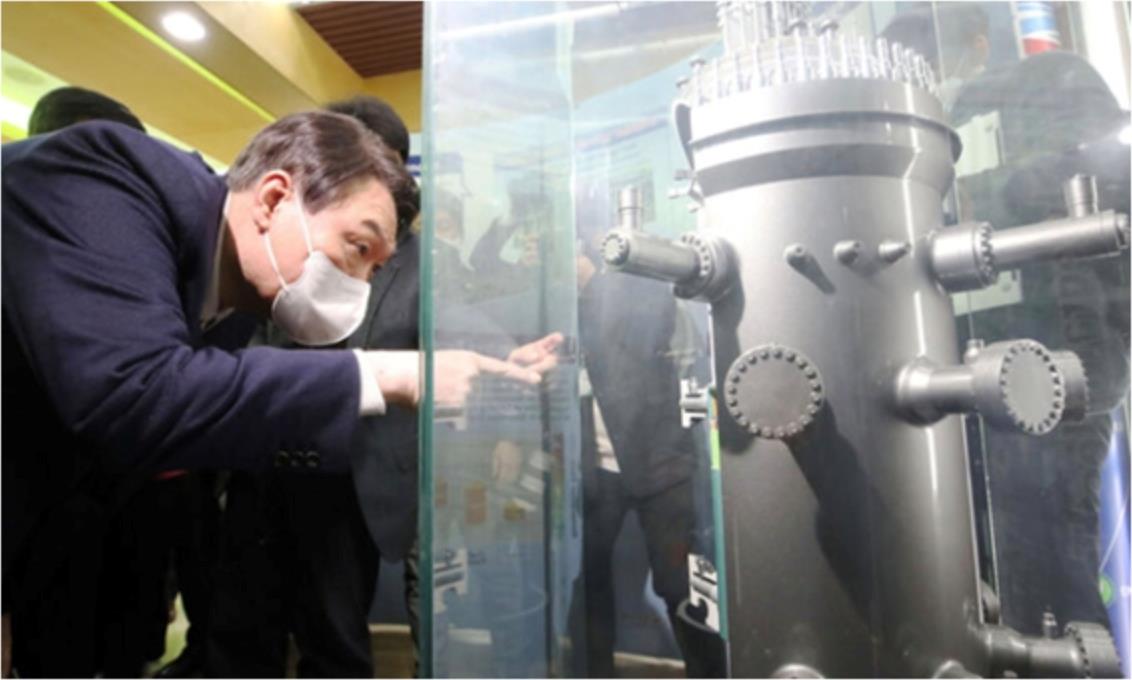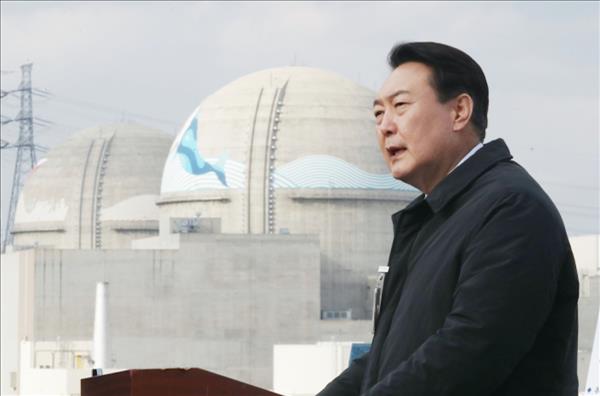
Seoul Puts Foot Back On The Nuclear Accelerator
SEOUL – The Yoon Suk-yeol government, which took office in May, is acting on a key electoral pledge by significantly boosting nuclear power output to meet carbon emissions goals and upgrade energy security.
South Korea has pledged to achieve carbon neutrality by 2050 – a stern task for a nation with so much heavy industry. It is also massively reliant upon imported fossil fuels.
The Ministry of Trade, Industry and Energy released the new administration's energy blueprint earlier today (July 5). According to the plan, Seoul will elevate nuclear's share of the national energy mix to 30% by 2030.
That percentage would put South Korea about on a par with Finland's 32.8% and Sweden's 30.8% and well ahead of countries including the UK's 14.8% and the US' 19.6% but well behind leaders such as France at 69% and Belgium at 50%, as per data from Statista.
Yoon's plan necessitates the increase of nuclear reactors from 24 to 28 nationwide, including the completion of two whose construction was halted under the previous government. Under the blueprint, the country will also seek to export 10 nuclear reactors and will invest some $300 billion in small, modular nuclear reactors.
According to the IAEA , this type of reactor can be sited upon locations unsuitable for larger plants. As prefabricated parts can be shipped and installed on site, they are more affordable to build than large power reactors, which are often custom-designed and have shorter construction times.
The energy plan will cut South Korea's heavy dependence on imported energy. Currently, soaring energy prices have contributed to inflation hitting levels unseen since the 1997 Asian financial crisis.
“If the plans are implemented without a hitch, our dependence on imported fossil fuels is expected to be reduced to around 60% in 2030 from last year's 81.8%,” the ministry said, according to Yonhap News.
The conservative Yoon has a wholly different stance toward nuclear than did his liberal predecessor. Under Moon Jae-in, Korea sought to slash the ratio of nuclear in the nation's energy mix to 23.9% by 2030, while cutting the number of working reactors from 24 to 18.
Yoon, touring nuclear facilities on June 22 called Moon's energy policies“foolish” while saying that during the term of his predecessor's administration, Korea lost its positioning in the sector.

President Yoon Suk-yeol takes a close look at a small modular reactor (SMR) model at the Korea Atomic Energy Research Institute in the Daedeok Research Complex in Daejeon in November 2021 when he was a presidential candidate for the People Power Party. Image: Twitter
“The competitiveness of our nuclear plant businesses lies in our ability to construct on time and on budget, which no other company in the world can imitate,” Yoon said, adding that if Korea had“further reinforced the nuclear power ecosystem, we probably would not have any competitors now.”
That might be an exaggeration, but Korea's biggest ever single export order, won in 2009, was for four nuclear generators for the UAE. The contract, won by a consortium led by Korea Electric Power Corporation and including Doosan, Samsung and Hyundai as key engineering parties, was worth US$20 billion .
Currently, two of the reactors are in operation, a third has been completed and a fourth is entering the final stages of construction.
Regardless of Korea's then-leading edge in atomic power generation, Moon had come into office in 2011 as an anti-nuclear politician whose position was fortified by Japan's Fukushima disaster, which deeply shocked Korea.
Moon promoted the use of hydrogen energy – a push Yoon has pledged to continue. He also sought to expand the adoption of green energy sources in Korea, which has one of the lowest ratios of renewables in the developed world.
In 2020, according to enerdata , Canada's energy was generated 67.7% from renewable sources, followed by 43.7% for the UK, 28.4% for China, 22.5% for India, 20.3% for Russia, 20.2% for Japan and 19.8% for the US.
South Korea was a notable laggard with just 7.1%.
But questions had always hung over the Moon nuclear policy, most particularly given that South Korea's economy is built on the foundation of one of the world's largest heavy industrial sectors. Heavy industry demands non-oscillating power that cannot be reliably supplied by renewables.
Over the course of the last year, the hole left by nuclear presented South Korean officials tasked with briefing foreign reporters on the nation's trajectory toward net-zero emissions fielding unanswerable questions.

A wind turbine is seen over the panels of a solar power plant of Korea South East Power Co. (KOSEP) in Incheon. Photo: Jo Yong-Hak
While putting forward ambitious plans on downstream electrification, civil servants speaking off the record at the end of briefings could not answer the question of where the upstream power would come from.
Several punted the ball forward, saying, in essence,“We'll have to wait for the next government's policy.” And even Moon, by the tail end of his administration, had come round to the need for nuclear.
“Over the next 60 years, while nuclear power plants continue to operate, nuclear power plants should be fully utilized as a main base source of electricity,” he told a meeting on energy stability in February.
Follow this writer on Twitter @ASalmonSeoul

Legal Disclaimer:
MENAFN provides the
information “as is” without warranty of any kind. We do not accept
any responsibility or liability for the accuracy, content, images,
videos, licenses, completeness, legality, or reliability of the information
contained in this article. If you have any complaints or copyright
issues related to this article, kindly contact the provider above.


















Comments
No comment